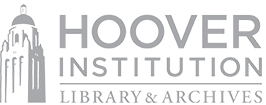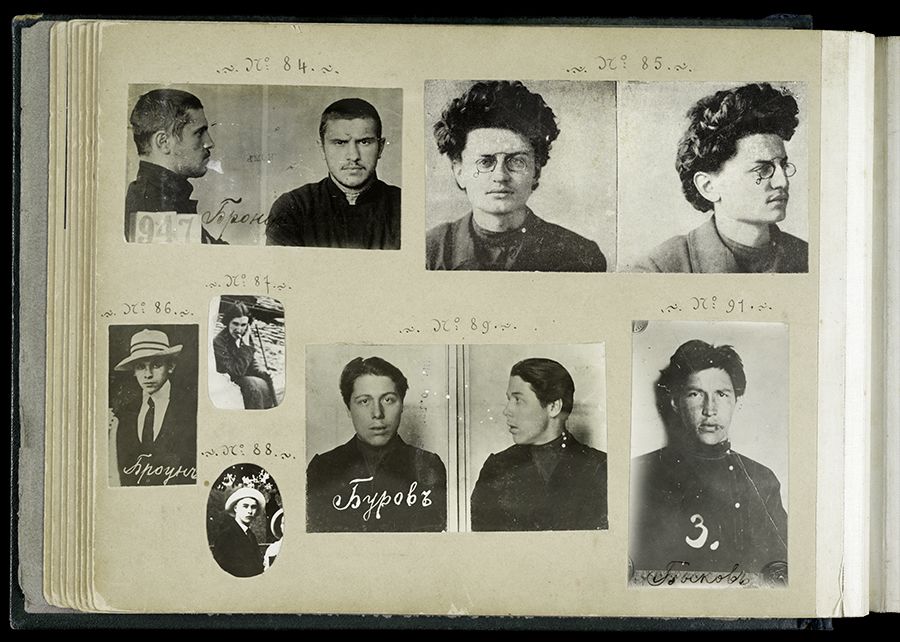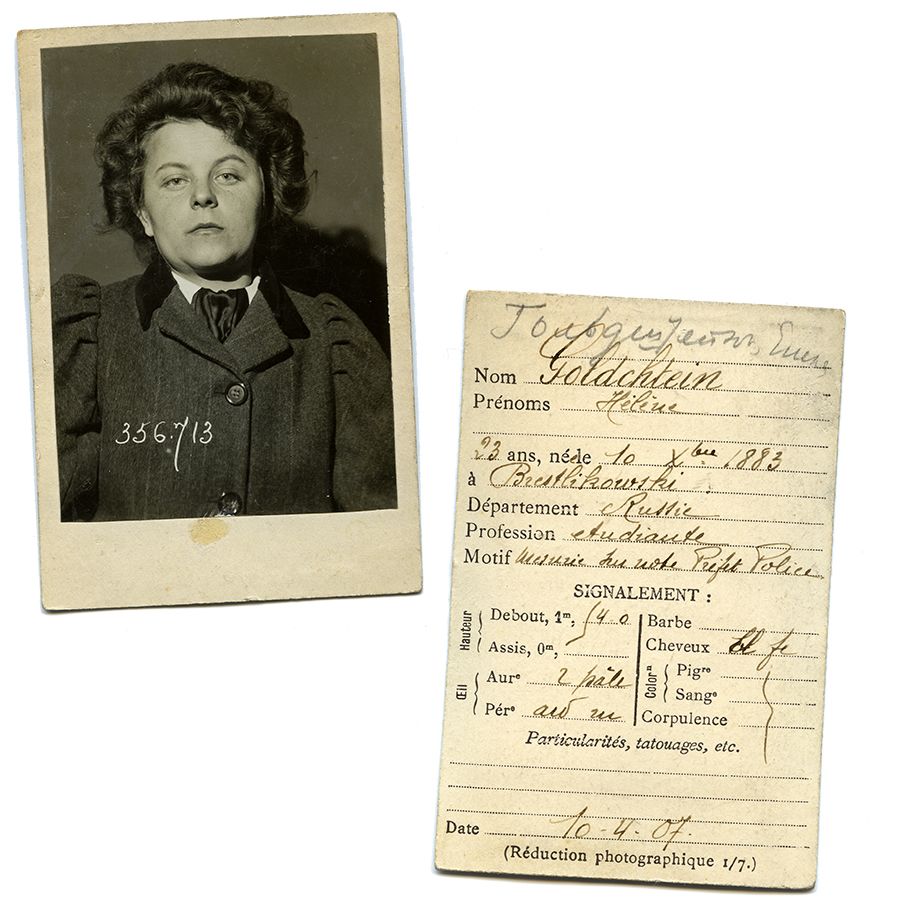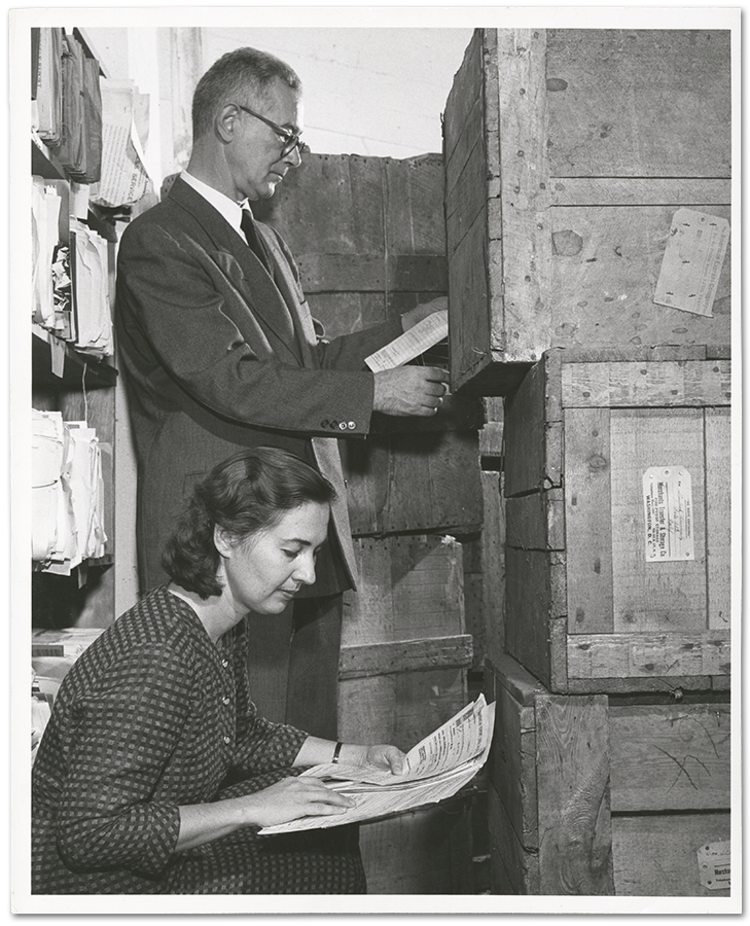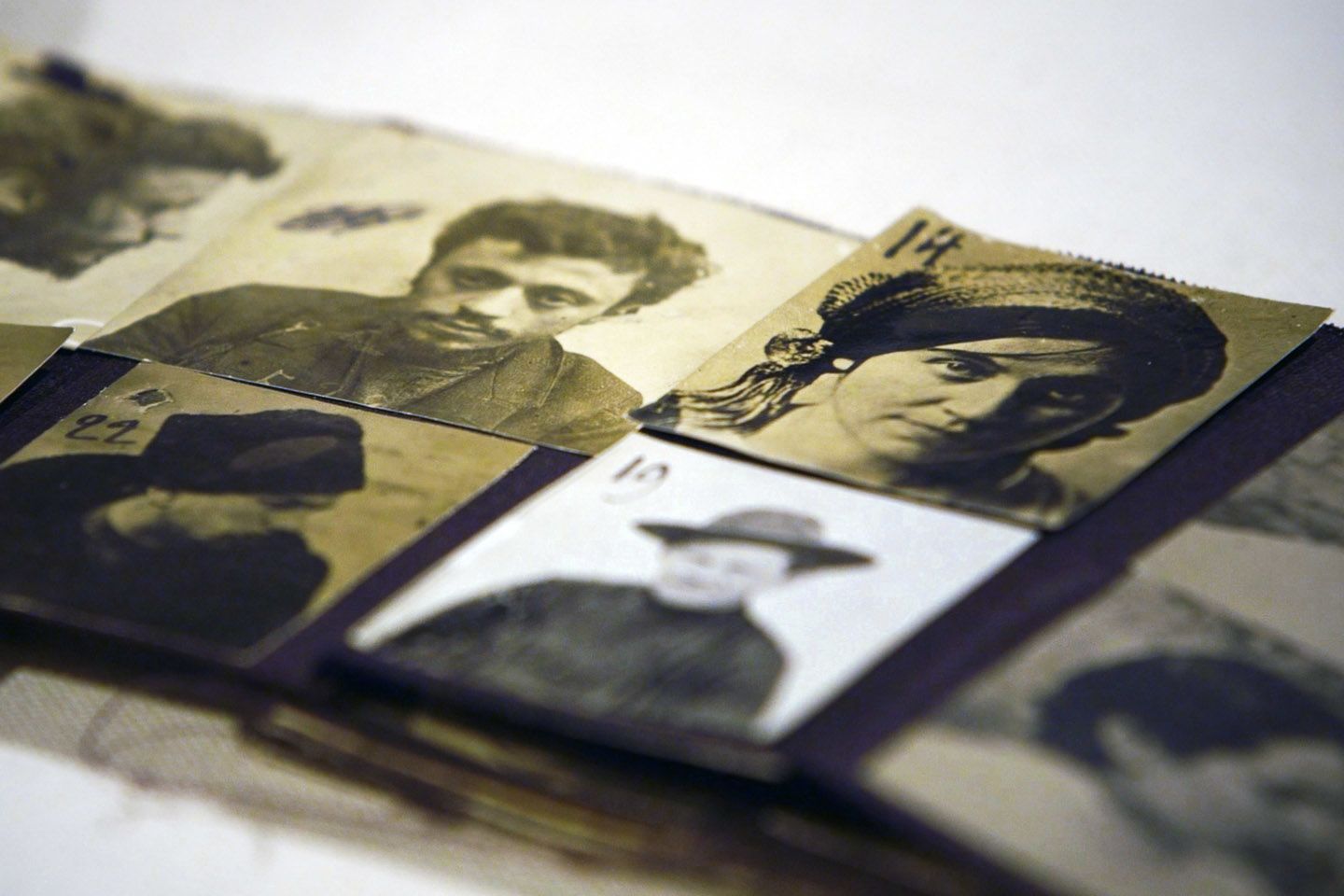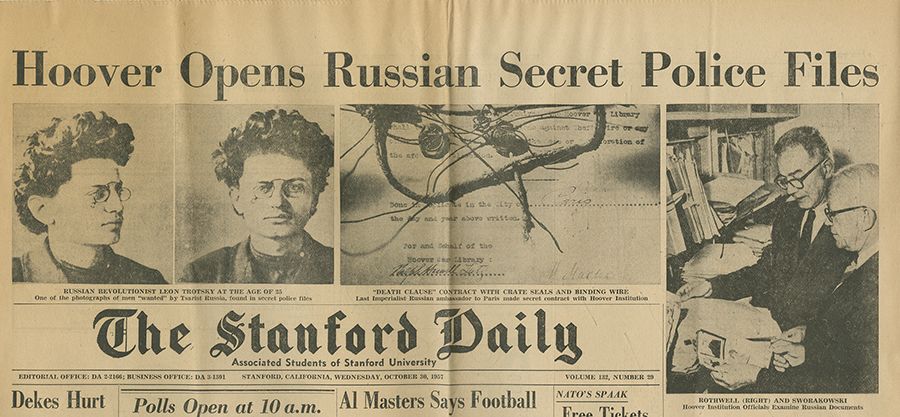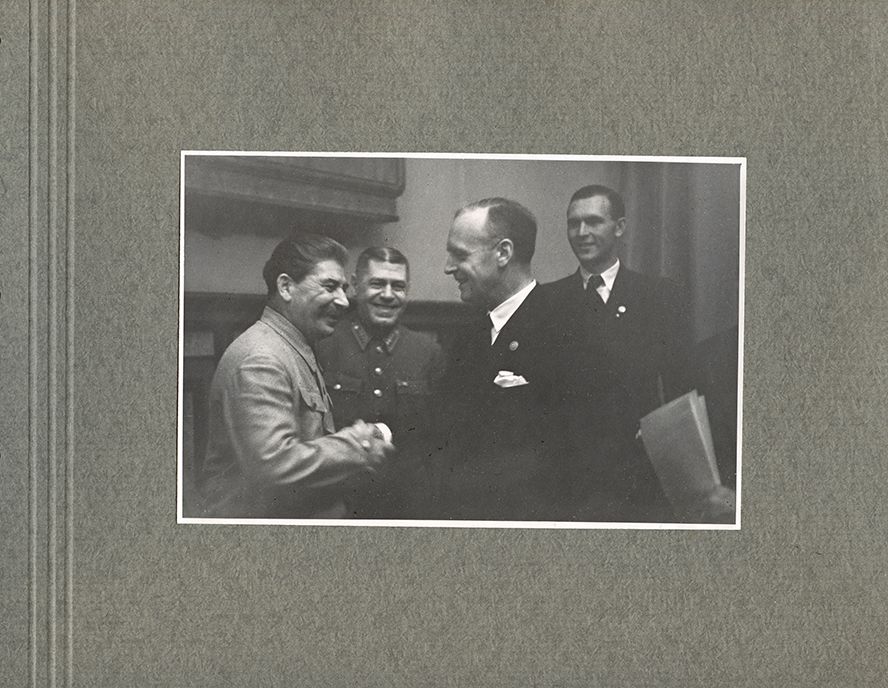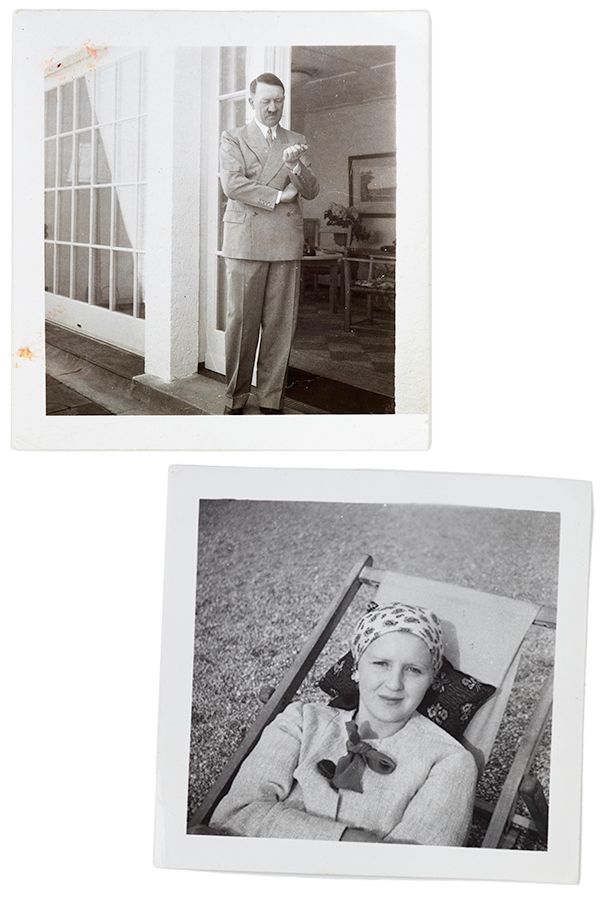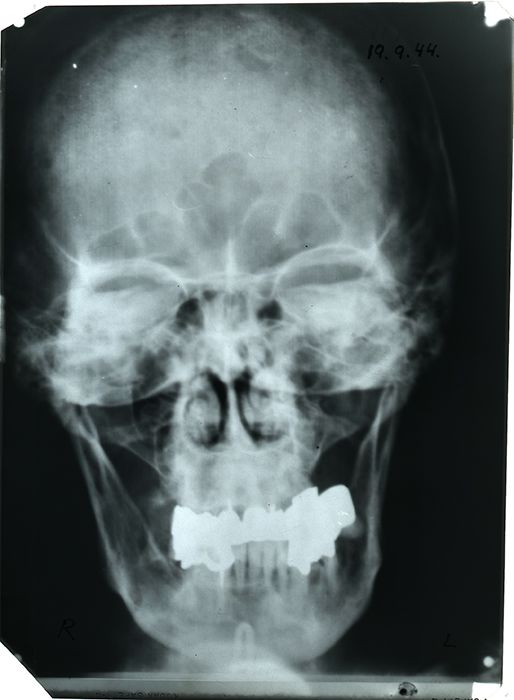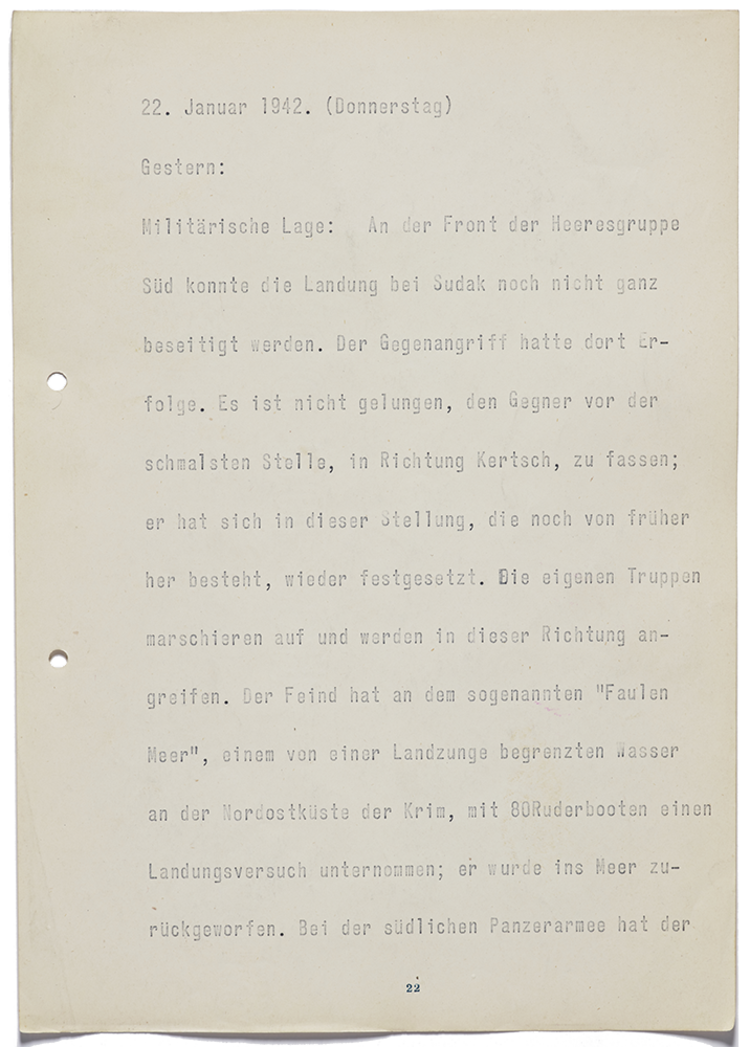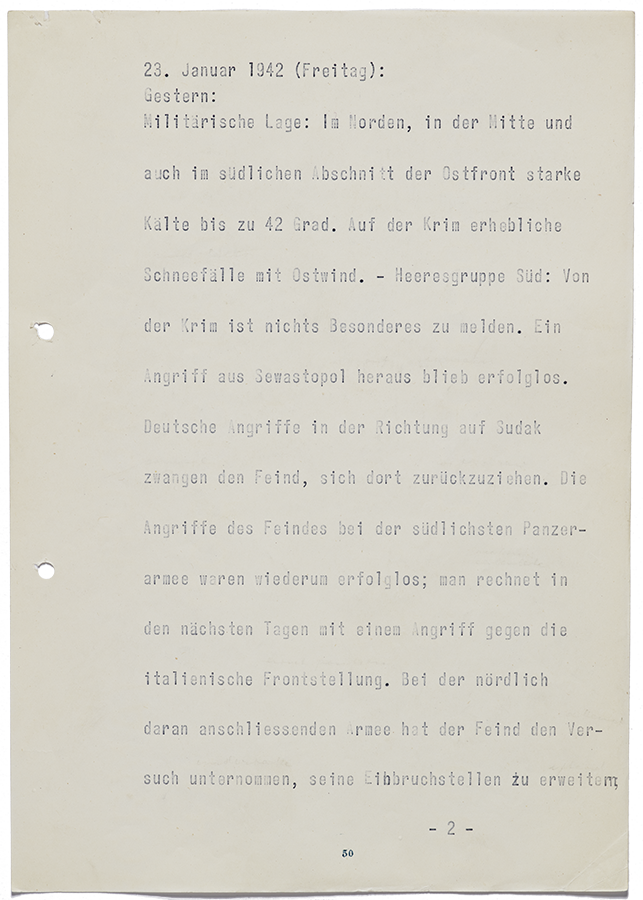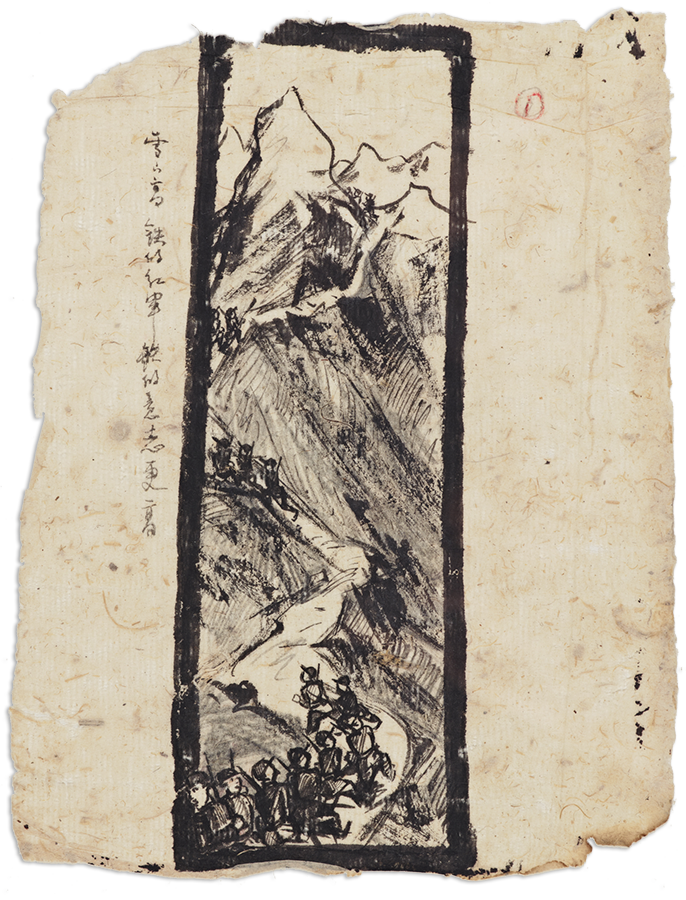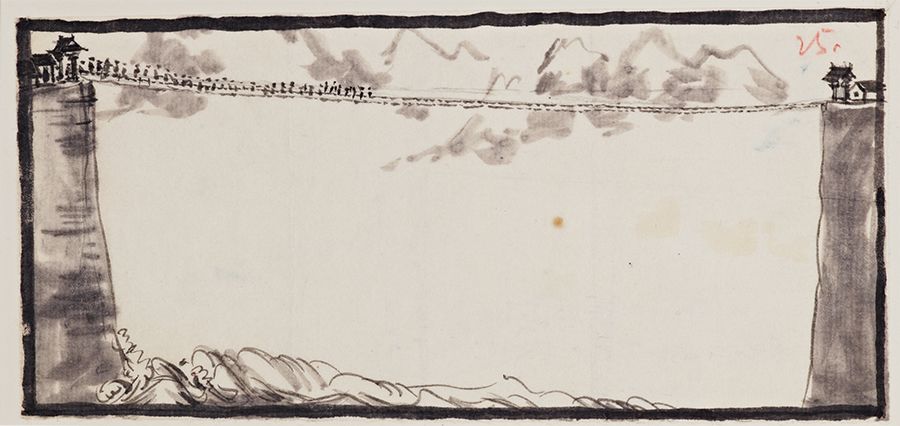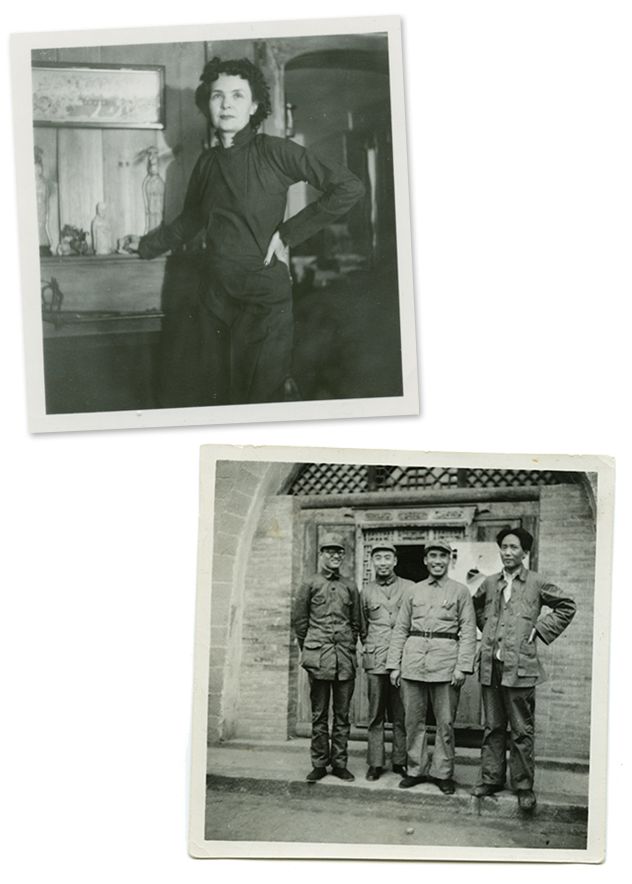Collecting the Ephemeral
Stories from the Library & Archives

"There will be a thousand years to catalogue this library but only ten years in which to acquire the most valuable of material."
Herbert Hoover to Ray Lyman Wilbur, 1924
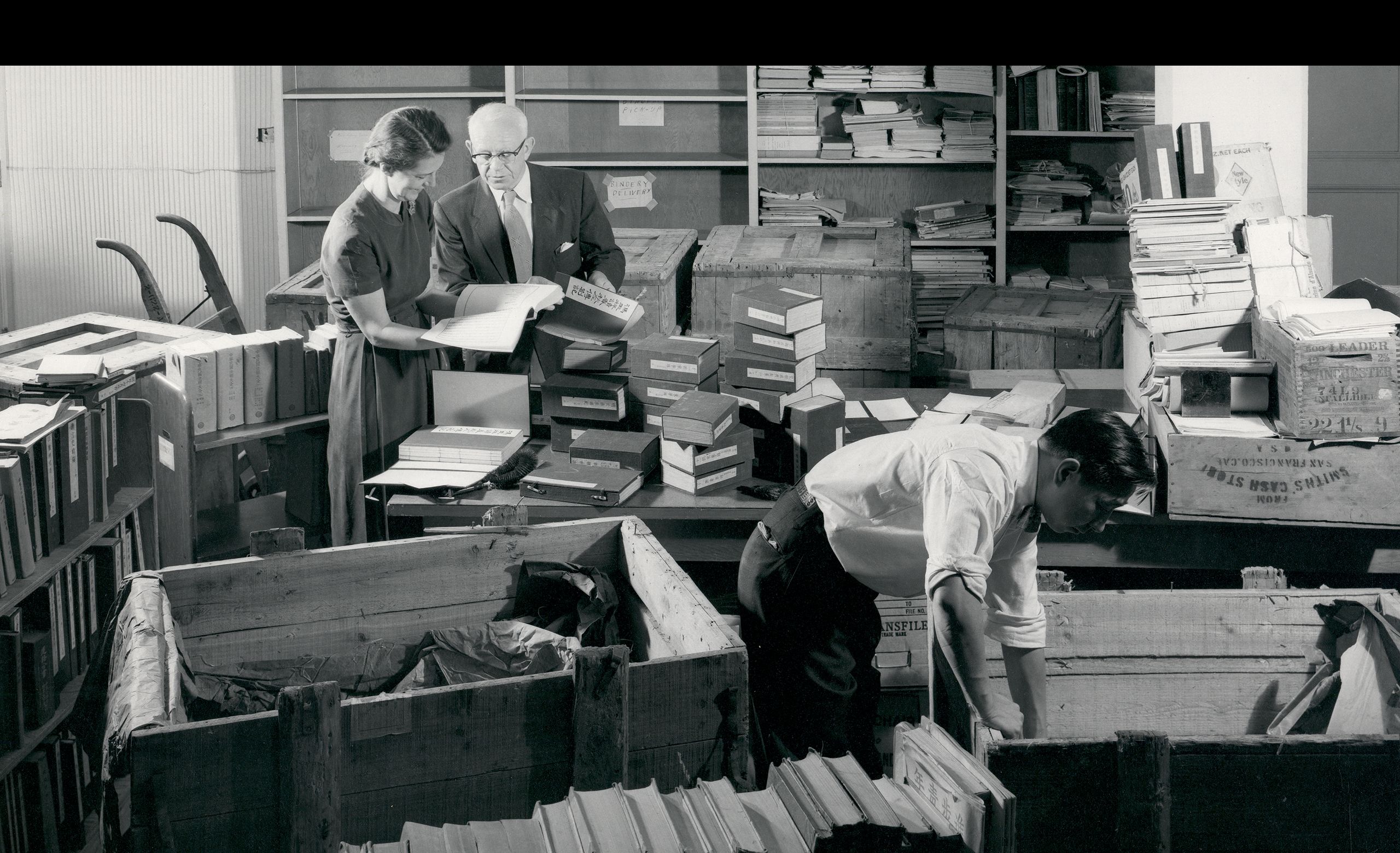
The Hoover Institution Library & Archives holds more than one million volumes and more than six thousand archival collections documenting war, revolution, and peace in the twentieth and twenty-first centuries. With so much material, there are endless stories to be discovered in the boxes, map drawers, art racks, and cabinets that span over 25 miles of linear shelving in both onsite and offsite storage.
Some of the most elusive stories, however, are about how or why material came to be housed at Hoover. Staff and curators work tirelessly behind the scenes to bring material that is rare, ephemeral, educational, and in keeping with the mission to be preserved at Hoover and made available for research. The free and open access to the collections, coupled with professional care and management, means unmatched educational opportunities for all.
Secrets Revealed
Russian Secret Police Files
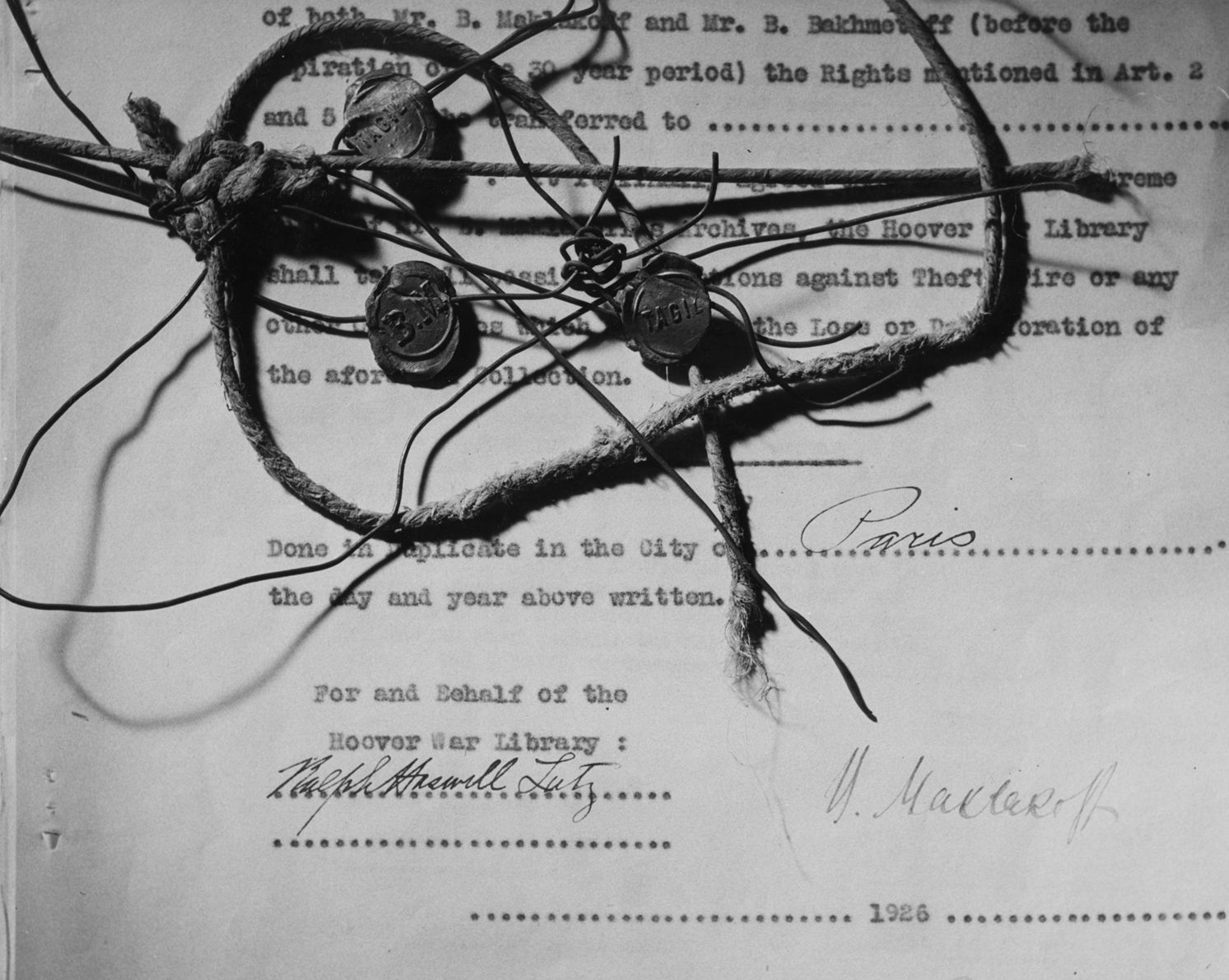
Album of mugshots of revolutionaries (open to a page featuring Leon Trotsky in the top right corner), circa 1900. Okhrana records, Hoover Institution Archives
Album of mugshots of revolutionaries (open to a page featuring Leon Trotsky in the top right corner), circa 1900. Okhrana records, Hoover Institution Archives
Helene Goldchtein identity card (front and back), 1907. Okhrana records, Hoover Institution Archives
Helene Goldchtein identity card (front and back), 1907. Okhrana records, Hoover Institution Archives
Professor Witold S. Sworakowski and reference librarian Marina Tinkoff prepare to open crates containing the Okhrana files, 1957. Hoover Institution on War, Revolution and Peace Records, Hoover Institution Archives
Professor Witold S. Sworakowski and reference librarian Marina Tinkoff prepare to open crates containing the Okhrana files, 1957. Hoover Institution on War, Revolution and Peace Records, Hoover Institution Archives
No other archival collection can match the Okhrana records in their vivid documentation of Russia’s revolutionary underground in the two decades leading up to the fall of the Romanovs in 1917. The Okhrana collection consists of files and photographs of many of the most-wanted Russian revolutionaries of the early twentieth century and illuminates the surveillance strategies of the tsarist government.
Pocket album of mugshots (close-up), circa 1890–1910. Okhrana records, Hoover Institution Archives
Pocket album of mugshots (close-up), circa 1890–1910. Okhrana records, Hoover Institution Archives
Many of the political enemies documented in the collection would eventually become leaders of the Soviet regime. Vasily Maklakov, the last Russian ambassador to France before the Bolsheviks came to power in 1917, secretly arranged to have the files shipped from Paris to the Hoover Library and kept sealed for thirty years. The opening was then delayed until after Maklakov’s death so that he would not face repercussions from the Soviets. The crates were unsealed only in 1957.
Headline from The Stanford Daily, October 30, 1957. Hoover Institution on War, Revolution and Peace Records, Hoover Institution Archives
Headline from The Stanford Daily, October 30, 1957. Hoover Institution on War, Revolution and Peace Records, Hoover Institution Archives
Since the archival records were opened, researchers and intelligence agencies have studied the collection to better understand pre-revolutionary Russian secret police techniques, which formed the basis of Soviet espionage and counterespionage during the Cold War. Indeed, six articles on the collection appeared in then classified editions of the CIA journal Studies in Intelligence during the 1960s.
Relics of the Third Reich
The William R. Philp Collection
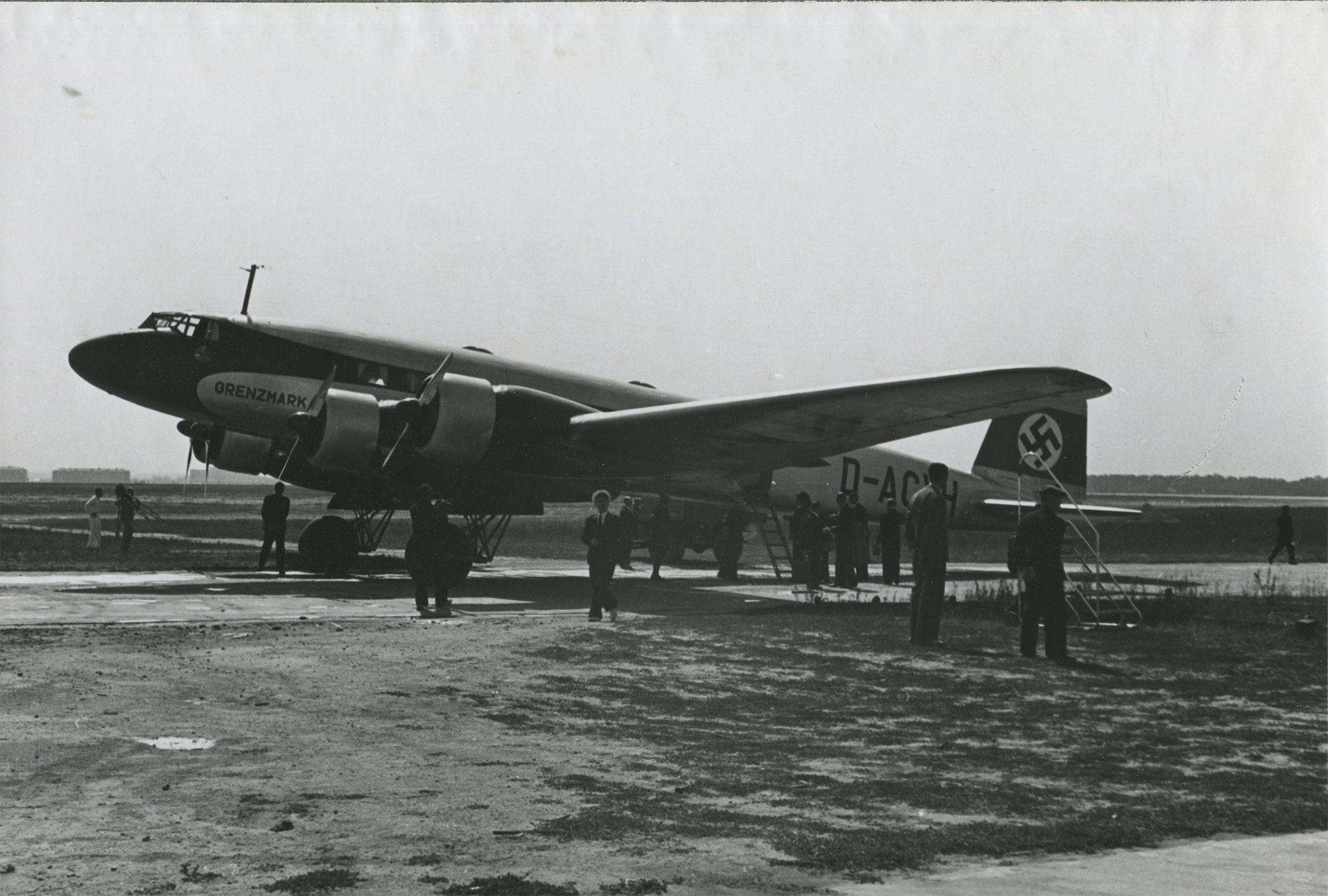
Cleaning out the closet is a great way to discover collections that deserve to be in an archive where the public can use them for research. Not that everyone has treasures—but William R. Philp, a retired US Army colonel living in San Francisco, certainly did in 1968. His wife got him to go through his World War II “stuff,” and he thought it might be of interest to the librarians at Hoover.
It turns out, Philp had been an intelligence officer advising on the Normandy invasion of June 1944, had served with General George Patton, and had been the Army’s chief of intelligence supervising prisoners awaiting trial at Nuremberg. In the war’s aftermath, Philp assembled a unique collection of documents and artifacts, among them Adolf Hitler’s marriage license; X-rays of Hitler’s skull taken after the failed attempt on his life in 1944; and Nazi photo albums.
Heinrich Himmler page from a scrapbook documenting Nazis on trial at Nuremberg, 1946. William Russell Philp Collection, Hoover Institution Archives
Heinrich Himmler page from a scrapbook documenting Nazis on trial at Nuremberg, 1946. William Russell Philp Collection, Hoover Institution Archives
Philp's donation to Hoover, nearly 25 years after the end of the war, led to this unique cache of materials becoming available for researchers focused on the Holocaust, the rise of fascism, Nazi-Soviet relations, and United States intelligence.
Joseph Stalin shaking hands with Nazi Foreign Minister Joachim von Ribbentrop (a page from the Molotov-Ribbentrop Album), 1939. William Russell Philp collection, Hoover Institution Archives
Joseph Stalin shaking hands with Nazi Foreign Minister Joachim von Ribbentrop (a page from the Molotov-Ribbentrop Album), 1939. William Russell Philp collection, Hoover Institution Archives
Snapshots of Adolph Hitler and Eva Braun at Berghorf, Germany, n.d. William Russell Philp Collection, Hoover Institution Archives
Snapshots of Adolph Hitler and Eva Braun at Berghorf, Germany, n.d. William Russell Philp Collection, Hoover Institution Archives
X-Ray of Adolph Hitler’s skull, September 1944. William Russell Philp Collection, Hoover Institution Archives
X-Ray of Adolph Hitler’s skull, September 1944. William Russell Philp Collection, Hoover Institution Archives
From Trash to Archives
The Papers of a Propagandist
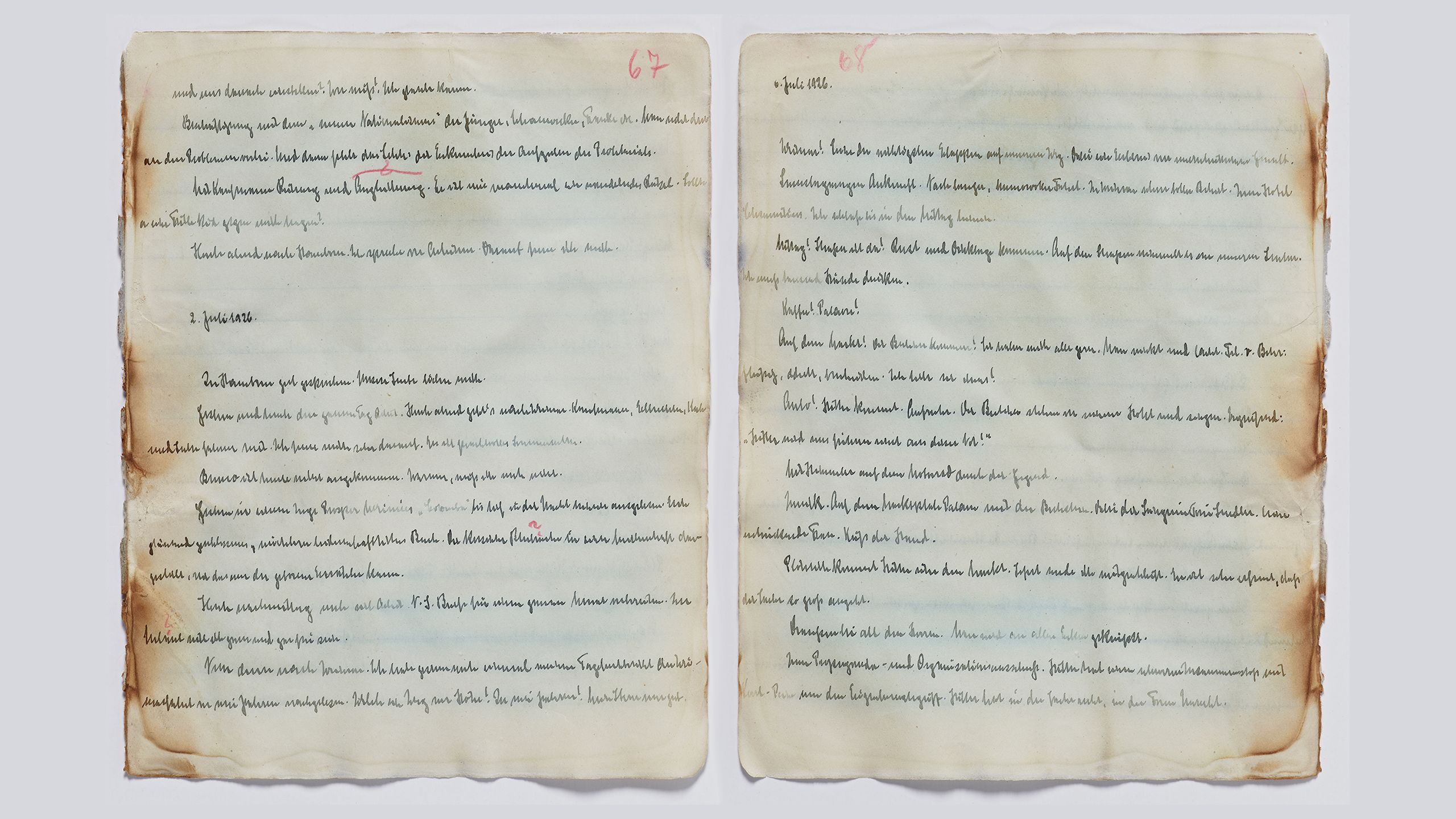
Typed report for Adolf Hitler from Joseph Goebbels, 1942. Joseph Goebbels Papers, Hoover Institution Archives
Typed report for Adolf Hitler from Joseph Goebbels, 1942. Joseph Goebbels Papers, Hoover Institution Archives
Typed report for Adolf Hitler from Joseph Goebbels, 1942. Joseph Goebbels Papers, Hoover Institution Archives
Typed report for Adolf Hitler from Joseph Goebbels, 1942. Joseph Goebbels Papers, Hoover Institution Archives
Picking up the trash is a rare way for collectors to get materials into archives, but it was a bit more common back at the end of World War II. For weeks after the end of the war, Berlin was, in the words of one American eyewitness, “one great junk yard.”
A selection of papers found in the Nazi Propaganda Ministry courtyard, by then under Soviet control, were collected by an amateur junk dealer for their superior paper quality—but there was something peculiar about them. Coming to the attention of Lieutenant Colonel William Heimlich, an American intelligence officer, the partially burned papers where acquired and identified as authored by Joseph Goebbels, the late Nazi propaganda minister and virulent anti-Semite. After Heimlich's superiors claimed no interest in the documents, he handed the nearly 7,000 manuscript pages over to Herbert Hoover.
Once accessible to researchers, authentication, translation, and publication of the diaries and papers proceeded with the help of the Hoover Institution, providing an eye-opening look into the horrors of the Nazi regime.
Title page spread from The Goebbels Diaries, edited, translated, and with an introduction by Louis P. Lochner, 1948. Hoover Institution Library
Title page spread from The Goebbels Diaries, edited, translated, and with an introduction by Louis P. Lochner, 1948. Hoover Institution Library
Joseph Goebbels began keeping a diary in 1923 and continued to do so until his death. He wrote entries by hand, three or four times a week until 1941, when he began to dictate daily entries, some of which ran up to thirty typed pages in length. The Hoover Institution has two original portions of the Goebbels diaries: a handwritten notebook covering the period 1925–26 recovered from the Führerbunker, and the typescript diary for 1942–43 salvaged from the junk dealer.
From Lost to Found
The Long March Sketches
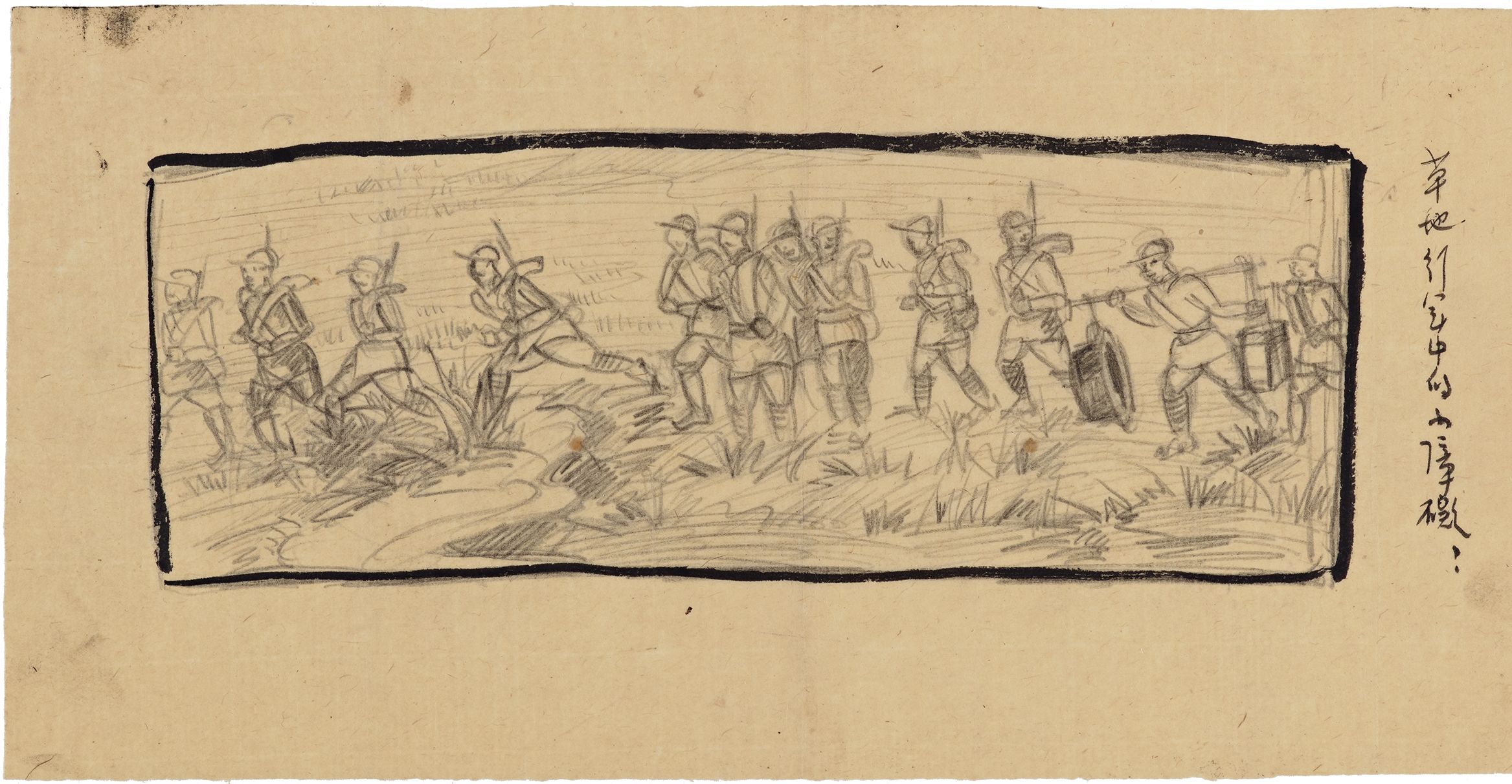
The chaos of war often leads to destruction and loss, especially of artworks. It was therefore believable that some of the most iconic sketches from early Communist China perished during the Sino-Japanese War or intervening conflicts.
The 24 black ink sketches were created by Huang Zhen during the Long March, a strategic retreat of Mao Zedong’s Red Army across 6,000 miles of treacherous terrain that lasted roughly a year from 1935 to 1936. As the only known visual records of this revolutionary moment in China’s history, their publication made them renown, especially as the artist rose to be a general in the Red Army, a diplomat, and then China’s minister of culture in 1977. Yet the originals hadn’t been seen in China since the 1930s.
Crossing the Luding Bridge, by Huang Zhen, circa 1935. Nym Wales Papers, Hoover Institution Archives
Crossing the Luding Bridge, by Huang Zhen, circa 1935. Nym Wales Papers, Hoover Institution Archives
Unexpectedly, the artworks were discovered decades later by a researcher looking in the Nym Wales papers at Hoover. Nym Wales (real name Helen Foster Snow) was a journalist who had made her way to the Chinese Communists’ headquarters in Yan’an and spent four months there interviewing and photographing Mao Zedong and his comrades in 1937. Huang had given her his artwork, and they were included in the collection of her papers. As part of the archives at Hoover, they have received quality care and preservation ensuring their longevity and accessibility.
Top: Nym Wales, n.d. Bottom: Mao Zedong and Red Army leaders, by Nym Wales, 1937. Nym Wales Papers, Hoover Institution Archives
Top: Nym Wales, n.d. Bottom: Mao Zedong and Red Army leaders, by Nym Wales, 1937. Nym Wales Papers, Hoover Institution Archives
Shieh Shan (The Great Snow Mountains), by Huang Zhen, circa 1935. Nym Wales Papers, Hoover Institution Archives
Shieh Shan (The Great Snow Mountains), by Huang Zhen, circa 1935. Nym Wales Papers, Hoover Institution Archives
Each Soldier Bears His Own Food, by Huang Zhen, circa 1935. Nym Wales Papers, Hoover Institution Archives
Each Soldier Bears His Own Food, by Huang Zhen, circa 1935. Nym Wales Papers, Hoover Institution Archives
The Hoover Institution Library & Archives wishes to receive notifications of alleged copyright infringement on this website. If you are a rights holder and believe that our inclusion of certain material on this website violates your rights, please contact:https://www.hoover.org/library-archives/collections/get-help/rights-and-permissions
© 2022 by the Board of Trustees of Leland Stanford Junior University.
